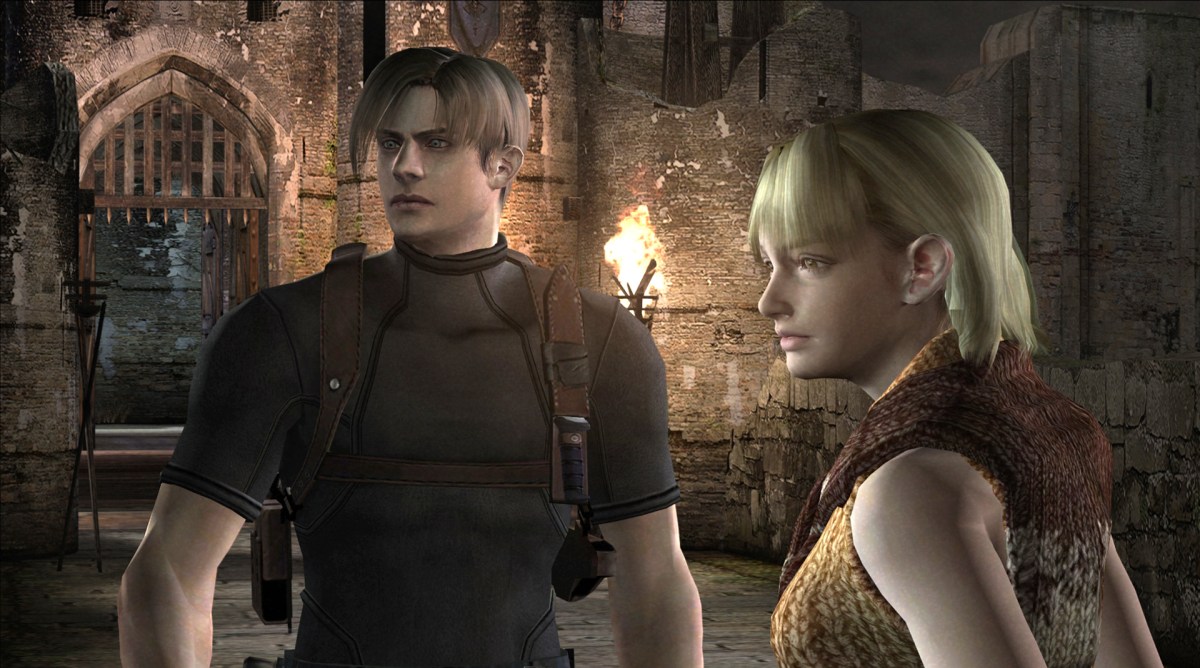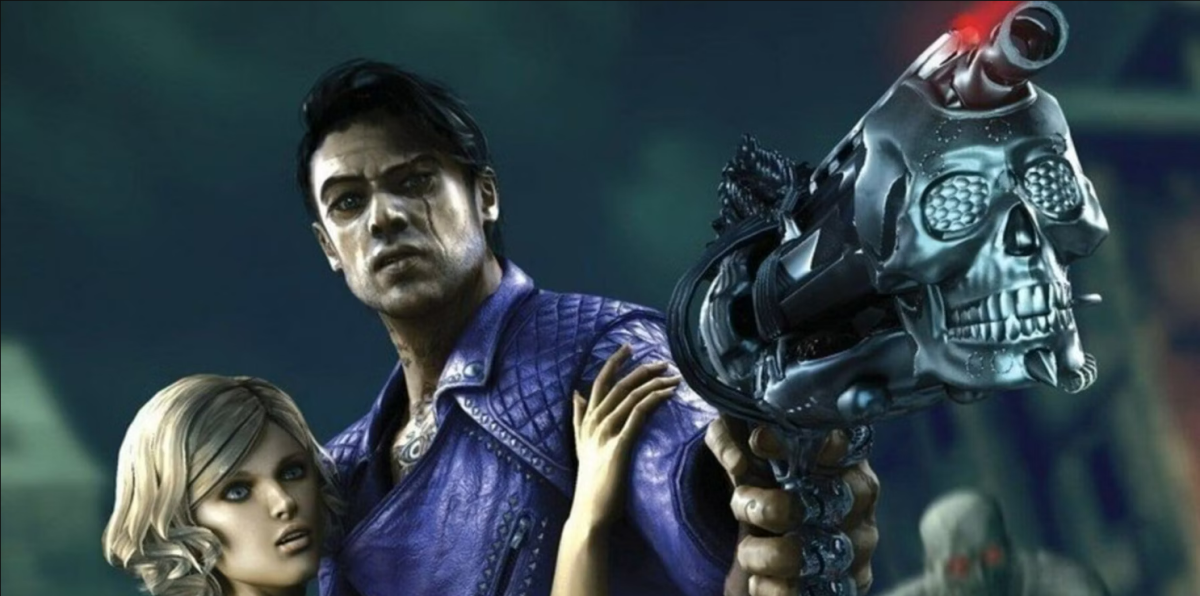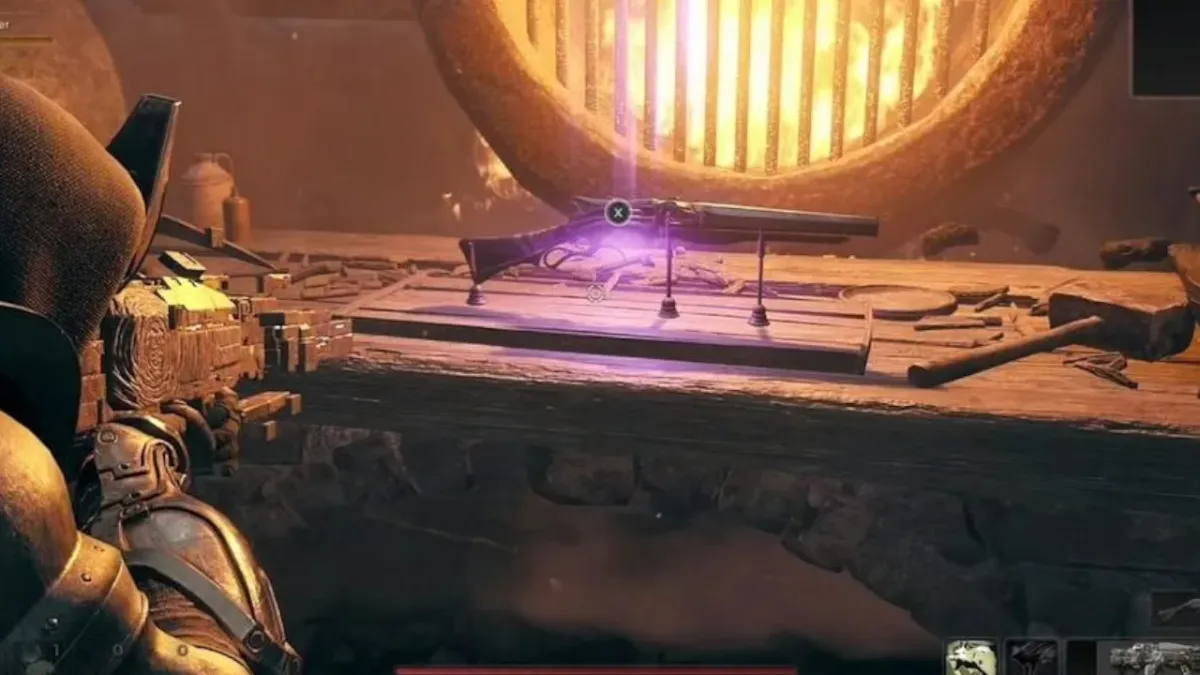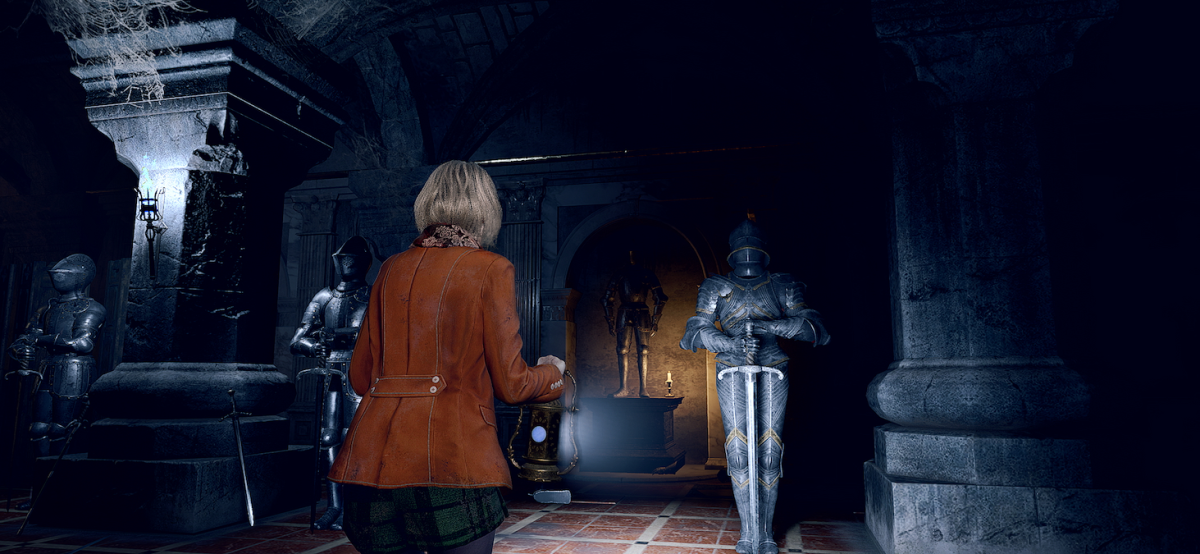The invisible controller
There’s a prevailing modern philosophy in action game design that says that the controller should “disappear.” You should feel like you’re doing something when you press a button and the character on the screen responds. You should map “looking around” and “walking” to two different sticks because we look around and walk at the same time. You should put “shoot” on a trigger because it feels a bit like pulling the trigger on a gun. You should not have your character stop in place every time they ready their gun, because holding a gun does not incapacitate the legs.
And yet, Resident Evil 4, among the most celebrated action games ever made, breaks every one of these rules. It constantly emphasizes the break between the player and the character. The presence of the controller is always felt. The movement is bizarre and unnatural. In recent years, it’s been subject to some criticism (IGN’s review of the remake says the original game’s star “struggles to get around as though he’s wearing an old pair of skinny jeans that haven’t fit him since his police academy days”). When the remake demo was released, I heard no shortage of praise for the new, more traditional dual-stick controls, usually accompanied by the phrase “they fixed the controls” or something similar.
But here’s the thing: Resident Evil 4‘s controls were already perfect.
Feeling the fear
The first three Resident Evil games are often celebrated (and sometimes derided) for their bizarre control schemes. These are games about rookie cops and civilians tossed into the deep end of a zombie apocalypse. They’re not sprinting through action sequences, they’re scrambling when they reach for their guns. Of course they move as though they’re being controlled by someone who can’t see the end of the hallway. They’re scared. The game wants you to feel that fear, and it communicates it by forcing you to fumble with the controller, by drawing attention to the inherent clumsiness of playing a video game and likening it to the inherent clumsiness of being terrified.

Feeling the controller is feeling the fear. It’s feeling the limits on what the medium will allow. It’s feeling what the characters literally cannot do, feeling the exact wall that stands between them and survival.
But Leon Kennedy (at least by the beginning of Resident Evil 4) is a different kind of protagonist. He’s an action hero. The opening minutes of RE4 establish that Leon’s here to save the president’s daughter, and he doesn’t care how many zombies and zombie-adjacent locals he needs to roundhouse to do it. So why is his movement so weird?
Trouble in kickass paradise
Resident Evil 4 is an “action game” in that its protagonist is an action star. When he’s shipped off to Spain, he’s confident in his abilities. He already shooed the zombies out of one police station, and he’s been in Cool Guy School training alongside guys named stuff like “Jack Krauser” ever since. He’s rolling into a new country with a shiny new over-the-shoulder camera that communicates confidence and grace.

Then he runs into danger and totally freezes. Leon is out of his element in RE4. He’s more graceful than he was back in Raccoon City, but as he quickly and aptly notes, he’s not dealing with the same zombies this time around. He’s learned a cool roundhouse kick, and he moves like he’s in his own skin, but caution automatically takes over when it’s time to open fire. He can feel the controller. When he’s established control over a situation, he can smoothly sprint ahead and start throwing kicks and punches, but usually he’s frozen in place, firing his gun with shaky hesitation.
The Resident Evil games have always been good at communicating character beats through control schemes, and RE4 does that expertly. Leon is a lot more comfortable here, and you can feel that comfort in the new level of control he has over his movement and his gunplay. But he’s still scared, and you can still feel that fear when you feel what he can’t do. The horror on display might be pretty schlocky, but it’s genuinely effective at establishing tension.
Frightful future
I’ve played the Resident Evil 4 demo a few times. I like it a lot! But it is, at least in the small segment that I’ve actually experienced, a “good” action game in a way that the original simply wasn’t. Leon Kennedy is right at home perfect-parrying his enemies, sprinting as he guns down cultists, and pulling off sick stunts without breaking a sweat. It feels surprisingly natural. In fact, I can barely feel the controller. I’m not sure if I love that.

To be clear, I don’t doubt that the Resident Evil 4 remake can capture the majesty of the original game. The remakes of RE2 and RE3 are both phenomenal pieces of design, and they both dramatically overhaul their respective original games’ control schemes. I’m sure the latest remake will be just fine. But when I hear people talk about the way it changes the game’s controls, as though these changes are both necessary and unequivocally “better,” I just feel a little sad. Resident Evil 4 might have good controls now, but it also had great controls then.





